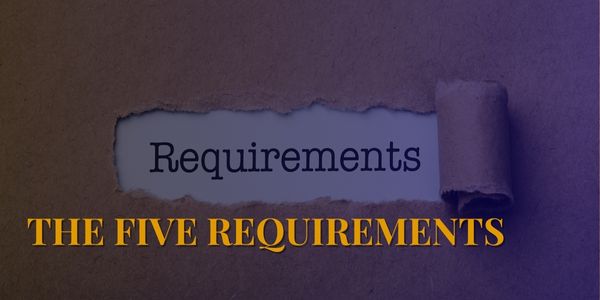Actually, let’s make that four…

Editor’s note: I’ve removed the Predicament from the five requirements of story in my structure model. It’s such an inherent piece that I’ve never seen it missing when the Climax is presented clearly. There’s no need to muddle things up!
We’ve been inundated with stories our entire lives. Whether you prefer to read (which I’m assuming you do since you’re a writer), watch television, watch movies, or listen to your great-grandparents, we can’t escape that fact, nor would we want to! Stories are our lives. We know them so well that, as consumers, we know when a story is working the way it should and when it’s not.
It’s when it’s not that’s the hard part. Have you ever been to your mother’s house, time and again, where everything is exactly the same, time and again? Then suddenly, you head over for Sunday dinner, and something is…off. You can’t put your finger on it, but something is missing. So, you search but come up empty-handed. Finally, you find out the vase that sat in the hutch for years had been removed.
Why did it take you so long to figure that out? You were so used to looking at the same decorations that you failed to notice. The same goes for story structure. We are so used to seeing the same basic story structure over and over that we don’t know what throws it off.
To be classified as a story, the structure must have the Five Requirements. There are different ways of presenting them, like your mom’s house compared to mine, but they’re all there: the couch, the TV, the kitchen table. Each genre has its different Essential Scenes and conventions, but each still meets the Five Requirements of Story.
The Five Requirements
The Inciting Incident
The first requirement of story is the Inciting Incident. This is the launching point of the story; it’s the part that forces the protagonist to react. Until this point, it’s been set up for what will happen: characters are introduced, and worlds are built. Without this, there’s no way to tell what type of growth the character will experience.
The tricky thing about the Inciting Incident is that it must somehow tie in with the plot’s Climax. It needs to take the character from the way he is now and hint at how he will be at the end without being obvious about what will happen between the two.
Conflict
Each story needs complication or Conflict. Why bother if you don’t see a character go through trials and tribulations? We want to see someone go through hard times and, more importantly, how they deal with them. It’s a bit morose, like watching a train wreck, but true. These complications can happen internally when the character has a hard time mentally and/or emotionally dealing with certain challenges or externally when outside forces are working against them.
These complications must build upon each other, with the next being more difficult than the last. These will build, most with a point of no return for the character, until the climax is finally reached. The building of anticipation and tension keeps readers reading instead of heading to bed. There can be as little as one conflict, such as in a short story (no, not all, but the shortest of shorts) or a series that builds within a novel.
The Predicament
These complications must build to the protagonist asking a big question or being put into a Predicament. Depending on the genre, it can be as vague as “Who am I?” to as specific as “Will Captain Karen Walden receive the Medal of Honor?” in Courage Under Fire (there is also an internal Predicament that Lt. Col. Nat Serling goes through, but for our purposes, let’s focus on the external).
All of the conflicts up to this point have asked the same questions. They complicate the answer, but the main Predicament is presented as plainly as possible just before the Climax.
Climax
The story’s Climax is when that burning question on everyone’s mind, the Predicament, is finally answered. It’s usually a series of events, a fight, or a specific moment that all the conflicts point to and eventually make clear.
That sounds a bit short for the most exciting part of the book, right? The story works because all the unanswered questions get answered, all the clues are put together, and everything is cleared up. Between the Predicament and the Climax can be a series of battles, internal or external, reflections, the reveal of clues, etc., to make this exciting.
Resolution
We can’t have all that action and reflection built and not have anywhere to go. That’s why the Resolution is so important. It lets us know that the protagonist or his world has changed and it ties up loose ends. This part tells us that life goes on for the characters. There will be more adventures and growth for them, whether or not a sequel is published.
Next time you watch a TV show or a beloved movie, see if you can spot any or all of these Requirements. Then, pick a movie that doesn’t quite work for you and see if you can spot where it went south.
Editor’s Note: The Five Requirements of Story were introduced to me through The Story Grid: What Good Editors Know by Shawn Coyne.
A free draft assessment might help you determine whether you’re missing one of the Five Requirements. Email jacque@soapboxedits.com to schedule yours today!
